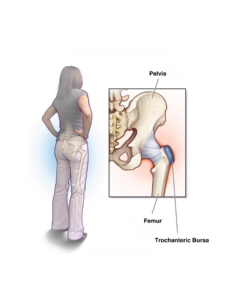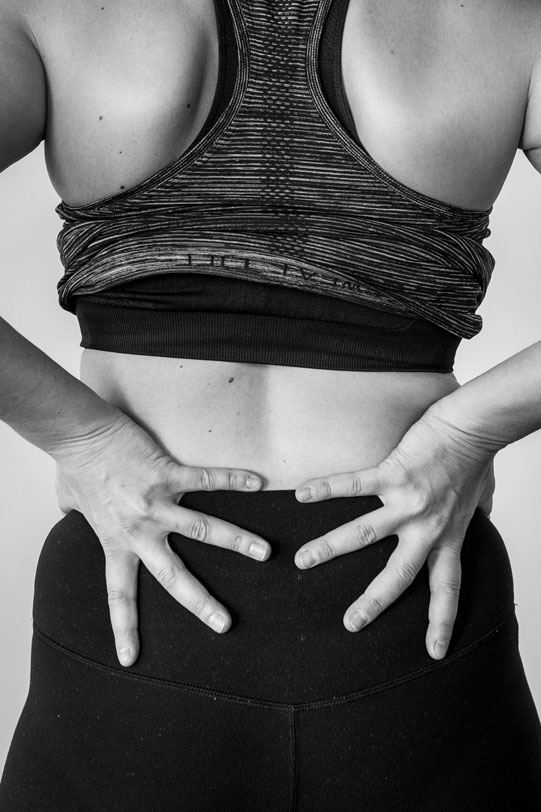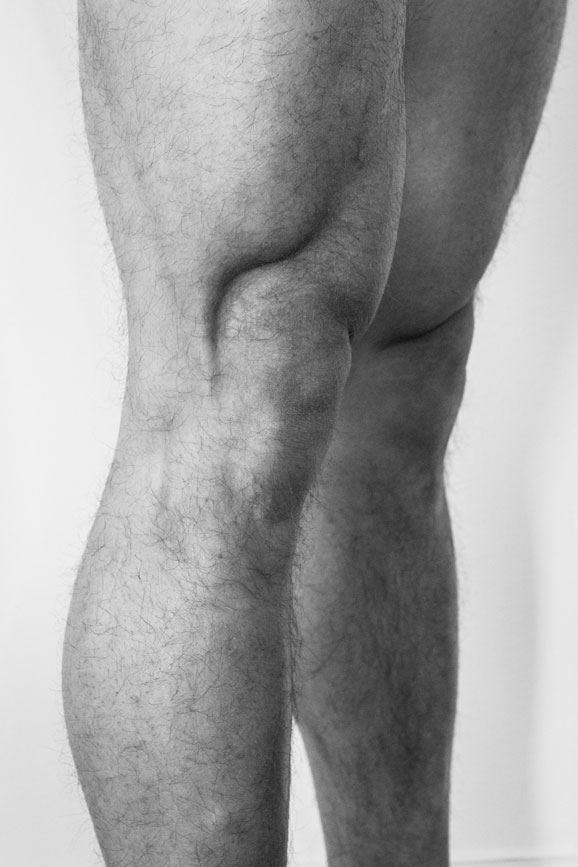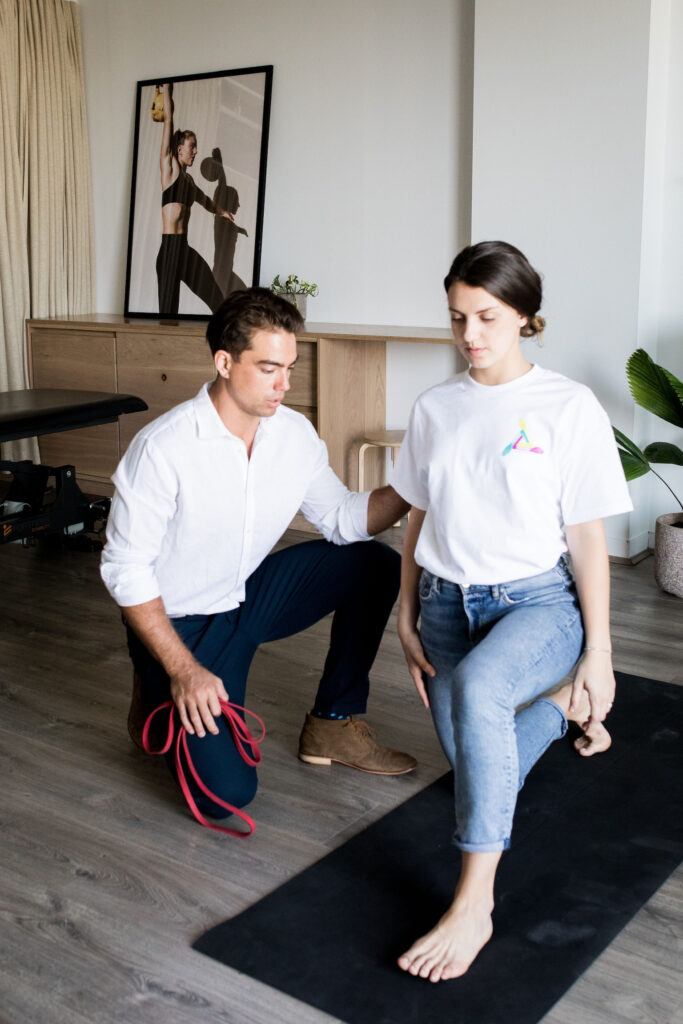What is Hip Bursitis?
If you’re curious about the question, “What is hip bursitis and what does it feel like?” you’re not alone. However, before we delve into that, it’s important to understand what a ‘bursa’ is, as well as what ‘-itis’ means.
Bursa
There are approximately 160 bursae in the human body. They function as fluid-filled sac-like structures that act as lubricants between other structures such as ligaments, tendons, and bones, thereby reducing friction among these parts of the body.
-itis
By definition, “-itis” refers to something inflammatory happening within the body. If you think of conditions like conjunctivitis, appendicitis, and bursitis, they all involve inflammation.
In simple terms, hip bursitis is an inflammatory response in the bursa of the hip, also known as the ‘trochanteric bursa’. It’s named this way because the bursa sits on the bony part of the hip called the greater trochanter. For most people, this location is around where their hands would naturally rest when standing with arms at the sides.

Symptoms of trochanteric bursitis include, but are not limited to,
- Pain when touched on the outer point of the hip
- Discomfort around the hip region.
Initially, people often describe it as sharp pain, which may become duller in the later stages.
Causes of Hip Bursitis in Adults
To understand the causes, it’s crucial to know that several glute muscles (gluteus medius, gluteus minimus, piriformis, obturator externus, and obturator internus) attach to the greater trochanter where the bursa is located. If these glute tendons repetitively shear over the bursa, it can lead to hip bursitis.
Factors contributing to this include:
- Poor co-contractions around the hip.
- Sudden increases in running or training volume
- Poor technique
- Impact to the side of the hip (from falls or hits)
- Over-pronation of the foot
- Anatomical differences, particularly in women
- Some hip flexor injuries
How To Treat Hip Bursitis? How Does Physio Help?
Addressing hip bursitis depends on individual circumstances. During the early stages, it’s important to avoid activities that irritate the bursa, such as lying on your side, sitting cross-legged, or squatting deeply.
Additionally, monitor your diet for foods and drinks high in inflammatory markers, as your body is already undergoing an inflammatory response. Gradual movement is advised, addressing any identified physical factors contributing to the condition.
Treatment may involve exercises to improve hip co-contractions or releases to alleviate pain. Remember, responses to rehabilitation vary, so a personalised approach is necessary.
Can Hip Bursitis Be Prevented?
Yes, most of the time hip bursitis can be prevented except for cases caused by trauma.
One key takeaway is to monitor the load around your hip. If you’re increasing activities like squatting, running, rowing, dancing, or cycling significantly without proper preparation and experience discomfort on the outer hip, seek help from a physiotherapist sooner rather than later. The recovery time is shorter if addressed promptly, as opposed to letting it linger for 4-6 weeks.
In conclusion, understanding the causes can help reduce the likelihood of experiencing hip bursitis. So if you’re training for the Sydney Marathon and suspect you might be feeling the symptoms of hip bursitis, see one of our physiotherapists to receive guidance on how recover.
- Written By Daniel Muntz (Physiotherapist)
- Last Updated On 13 Nov 2023




